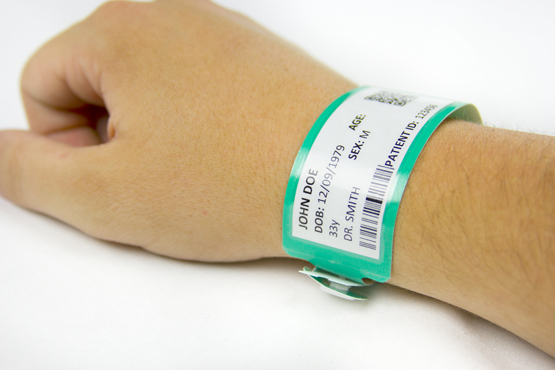How a Patient Identification Band Can Help Prevent Identity Confusion in Healthcare Settings
How a Patient Identification Band Can Help Prevent Identity Confusion in Healthcare Settings
Blog Article
Checking Out the Different Kinds of Patient Identification Band Used in Medical Facilities
In the elaborate world of health care, the essential role of Patient Identification bands usually goes unnoticed. These bands, differing from easy paper wristbands to advanced RFID bands, create the backbone of Patient security methods, making sure accuracy in Patient Identification.
Comprehending the Relevance of Patient Identification Bands
While they may seem like simple devices, Patient Identification bands play an important role in clinical centers. These bands serve as a critical tool for verifying Patient identity, protecting against clinical errors connected to misidentification. Patient Identification bands likewise aid in simplifying administrative jobs, ensuring exact record-keeping and payment.
Conventional Paper Wristbands: Their Use and Limitations
Traditional paper wristbands have actually been a staple in Patient Identification across various medical centers. While their use prevails, they nurture certain limitations that may influence their effectiveness in Patient management. This section will certainly concentrate on the extent of their application and the inherent disadvantages associated with their usage.
Paper Wristbands: Use Extent
In the realm of Patient Identification, paper wristbands have long held a vital function. These bands are commonly used in outpatient setups, where the Patient's keep is short-lived. In spite of developments in technology, the modest paper wristband remains a reputable and cost-efficient option for Patient Identification in various health care scenarios.
Limitations of Paper Wristbands
Regardless of their widespread use, paper wristbands are not without their drawbacks. In addition, paper wristbands commonly lack the technical abilities of even more modern-day alternatives, such as barcoding or RFID chips, restricting their functionality to just displaying written details. Paper wristbands can create discomfort or skin irritation to some clients, specifically when used for prolonged durations.
Barcoded Wristbands: Improvements in Patient Identification
While Patient Identification has actually long been an essential element of health care, the advent of barcoded wristbands represents a considerable jump ahead. These bands take advantage of the simplicity of barcoding modern technology, enabling for Patient details to be promptly checked and accessed. They enhance the rate and precision of Patient Identification, reducing the threat of clinical mistakes associated to misidentification.
Superhigh Frequency Identification (RFID) Bands: an Action Towards Futuristic Healthcare
The development of Patient Identification bands has brought regarding the development of Superhigh frequency Identification (RFID) Bands (patient identification band). These cutting-edge gadgets present key benefits for health care facilities, providing a more effective and technically advanced means of Patient Identification. The application of RFID in medical care is a significant action towards a more advanced technique to Patient management and security
Comprehending RFID Bands

RFID Bands: Trick Advantages
Largely, these bands enhance Patient safety by giving accurate, instant Identification, thereby decreasing clinical mistakes. RFID bands can save a substantial quantity of Patient information, including medical history and allergies, enabling customized care. Overall, RFID bands stand for a substantial improvement in Patient Identification modern technology, profiting both individuals and medical care useful reference service providers.
Carrying Out RFID in Medical Care
As we enter a technologically advanced era, the application of RFID bands in medical care ends up being significantly crucial. These bands give a seamless method to track and identify people, guaranteeing their safety and security and enhancing performance in therapy procedures. RFID bands provide various benefits over traditional Identification approaches. They can store a large amount of information, consisting of the Patient's case history and treatment plans, which can be quickly accessed by healthcare providers. This data assists doctors make educated choices regarding the Patient's treatment strategy. Furthermore, RFID bands reduce clinical mistakes by providing accurate Patient Identification, which is crucial in preventing misdiagnosis or incorrect medication management. Hence, the execution of RFID bands is a considerable action in the click to read direction of improving Patient safety and security and medical care shipment.

Color-Coded Wristbands: Helping in Quick and Accurate Medical Diagnosis
In the bustling environment of a clinical facility, color-coded wristbands have emerged as essential tools for swift and exact Identification of an individual's clinical condition. These wristbands, used by patients, lug specific colors that match to various medical conditions or standings. Red could suggest allergic reaction threats, while yellow could signify a loss threat. This system is developed to provide prompt aesthetic cues to healthcare service providers, boosting Patient safety and security and care high quality. In emergency situation situations, using these wristbands permits rapid decision-making. However, the performance of color-coded wristbands depends on the harmony of shade analysis throughout health care organizations, requiring common criteria for constant application.
Approaches for Efficient Execution and Monitoring of Patient ID Bands
Achieving ideal use of Patient Identification bands demands a well-structured approach for their execution and monitoring. Patient education and learning is likewise crucial; individuals should recognize the purpose of the bands and the requirement for their consistent wear. It's important to have a backup strategy in area, such as barcode scanning or biometrics, to make sure that Patient Identification is never ever endangered.
Conclusion
Patient Identification bands are important in see this here medical facilities to ensure safety and security and precision. Effective application and management of these bands can significantly minimize clinical mistakes, enhance performance, and boost overall Patient care.
These bands, varying from basic paper wristbands to advanced RFID bands, create the foundation of Patient security methods, guaranteeing accuracy in Patient Identification.The development of Patient Identification bands has actually brought regarding the introduction of Radio Regularity Identification (RFID) Bands. Generally, RFID bands stand for a considerable innovation in Patient Identification technology, benefiting both clients and medical care companies.
RFID bands minimize clinical errors by providing accurate Patient Identification, which is essential in avoiding misdiagnosis or wrong medicine management. Patient education is likewise critical; clients must understand the objective of the bands and the need for their constant wear.
Report this page